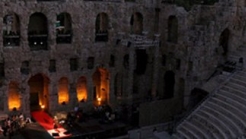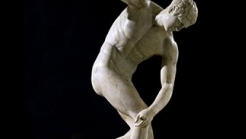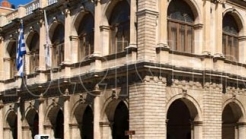

Greece
The house Chronaki is an important monument of the city of Heraklion, which for years was forgotten by everyone and everything. Last many have attempted to deal with in order to show off this sleek architectural. Is the mansion known by two names: House Chronaki or otherwise Konaki Rasich Bey Asprak
The house Chronaki: The mansion of forgetfulness
The house Chronaki is an important monument of the city of Heraklion, which for years was forgotten by everyone and everything. Last many have attempted to deal with in order to show off this sleek architectural. Is the mansion known by two names: House Chronaki or otherwise Konaki Rasich Bey Aspraki.
The house was built by Chronaki Rasich Aspraki Bey, a wealthy Turkish merchant, after the terrible earthquake of 1856. Architectural design of the building was based on the standards of the mansions of Thessaly and northern Greece. After a grave natural disaster, Heraklion applied strictly the Ottoman imperial building regulations regarding reconstruction. The house Chronaki is the starkest example of this style. Actually, the building's interior exudes the air of a bygone era.
During population exchange that followed the Treaty of Lausanne in 1922, the house became the property of the family Chronaki since been designated as exchangeable (received its current name from the new owners). In 1969 expropriated by the Ministry of Culture, and in 1983 was granted for twenty years in the municipality of Heraklion. The Municipality of the renovated and in 1991 was visited. In recent years, however, is closed and inaccessible to the public.
This architectural jewel remains untapped for years and neglected to wear of time. The authorities responsible for the maintenance ostentatiously indifferent to his rehabilitation. But many people who are sensitive to issues of history and culture of the city, have been active in order to find the monument to the rightful place in the cultural pantheon of the city.


The Athens festival is big celebration, which continues the active presence for 56 consecutive summers, which have shown some of the most famous names of the theater, music, dance, the field of music is Mitropoulos and Callas, Sain-Saens and Rostropovits, Pavarotti, Leonidas Kabakos


The aim of the exhibition is not only to provide info on the games in ancient times, but also to initiate the visitor in what the Olympics were.


Loggia was the Club of Venetian and Cretan rulers of the Kingdom of Crete. Today it accommodates the Municipality of Heraklion. The building that is visible today it is build in the time of Francis Morosini in 1628. Winged lion of The Most Serene Republic of Adriatic is everywhere.
1039 Ε 6061 01515 00